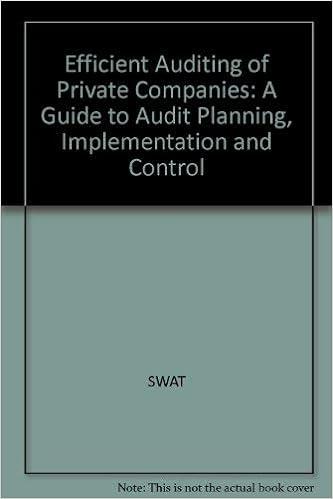
2. Obtain monthly data for Total Nonfarm Payroll Employment for the 1975M1-2018M12 sample (Not Seasonally Adjusted) available on FRED under code PAYNSA. (a) Construct the following transformed time series - change in Total Nonfarm Payroll Employment Et=EtEt1 - log of Total Nonfarm Payroll Employment logEt - log change in Total Nonfarm Payroll Employment logEt=logEtlogEt1 - 12 month log change in Total Nonfarm Payroll Employment 12logEt=logEt logEt12 - twice differenced Total Nonfarm Payroll Employment 12logEt=12logEt 12logEt1 Plot the original and the transformed time series. Comment on their trends, volatility, seasonal patterns. (b) Use ggseasonplot to create seasonal plots for Et and logEt. Comment on the seasonal patterns. (c) Plot ACF and PACF for logEt,logEt,12logEt,12logEt. Comment on their shape. (d) Perform the ADF and KPSS tests on logEt,12logEt,12logEt. Summarize the results. (e) Split the sample into two parts: estimation sample from 1975M1 to 2014M12, and prediction sample from 2015M1 to 2018M12. Use ACF and PACF from (c) to identify and estimate a suitable model for 12logEt using arima. Check the estimated model for adequacy - diagnose residuals using ggtsdiag. (f) Use auto.arima to find the best model for logEt. Check the estimated model for adequacy - diagnose residuals using ggtsdiag. (g) Use slide from tsibble package to create a rolling scheme sequence of 1 period ahead forecasts for the prediction subsample 2015M1-2018M12 using the same model specification as in (f). (h) Plot the forecast for Et from ( g ) together with its confidence intervals and the actual data for the period 2008M1-2018M12. (i) Use the forecast for Et from (g) to construct the forecast for Et, plot it together with the actual data. (j) Construct and plot the forecast errors for Et and for Et. 2. Obtain monthly data for Total Nonfarm Payroll Employment for the 1975M1-2018M12 sample (Not Seasonally Adjusted) available on FRED under code PAYNSA. (a) Construct the following transformed time series - change in Total Nonfarm Payroll Employment Et=EtEt1 - log of Total Nonfarm Payroll Employment logEt - log change in Total Nonfarm Payroll Employment logEt=logEtlogEt1 - 12 month log change in Total Nonfarm Payroll Employment 12logEt=logEt logEt12 - twice differenced Total Nonfarm Payroll Employment 12logEt=12logEt 12logEt1 Plot the original and the transformed time series. Comment on their trends, volatility, seasonal patterns. (b) Use ggseasonplot to create seasonal plots for Et and logEt. Comment on the seasonal patterns. (c) Plot ACF and PACF for logEt,logEt,12logEt,12logEt. Comment on their shape. (d) Perform the ADF and KPSS tests on logEt,12logEt,12logEt. Summarize the results. (e) Split the sample into two parts: estimation sample from 1975M1 to 2014M12, and prediction sample from 2015M1 to 2018M12. Use ACF and PACF from (c) to identify and estimate a suitable model for 12logEt using arima. Check the estimated model for adequacy - diagnose residuals using ggtsdiag. (f) Use auto.arima to find the best model for logEt. Check the estimated model for adequacy - diagnose residuals using ggtsdiag. (g) Use slide from tsibble package to create a rolling scheme sequence of 1 period ahead forecasts for the prediction subsample 2015M1-2018M12 using the same model specification as in (f). (h) Plot the forecast for Et from ( g ) together with its confidence intervals and the actual data for the period 2008M1-2018M12. (i) Use the forecast for Et from (g) to construct the forecast for Et, plot it together with the actual data. (j) Construct and plot the forecast errors for Et and for Et







